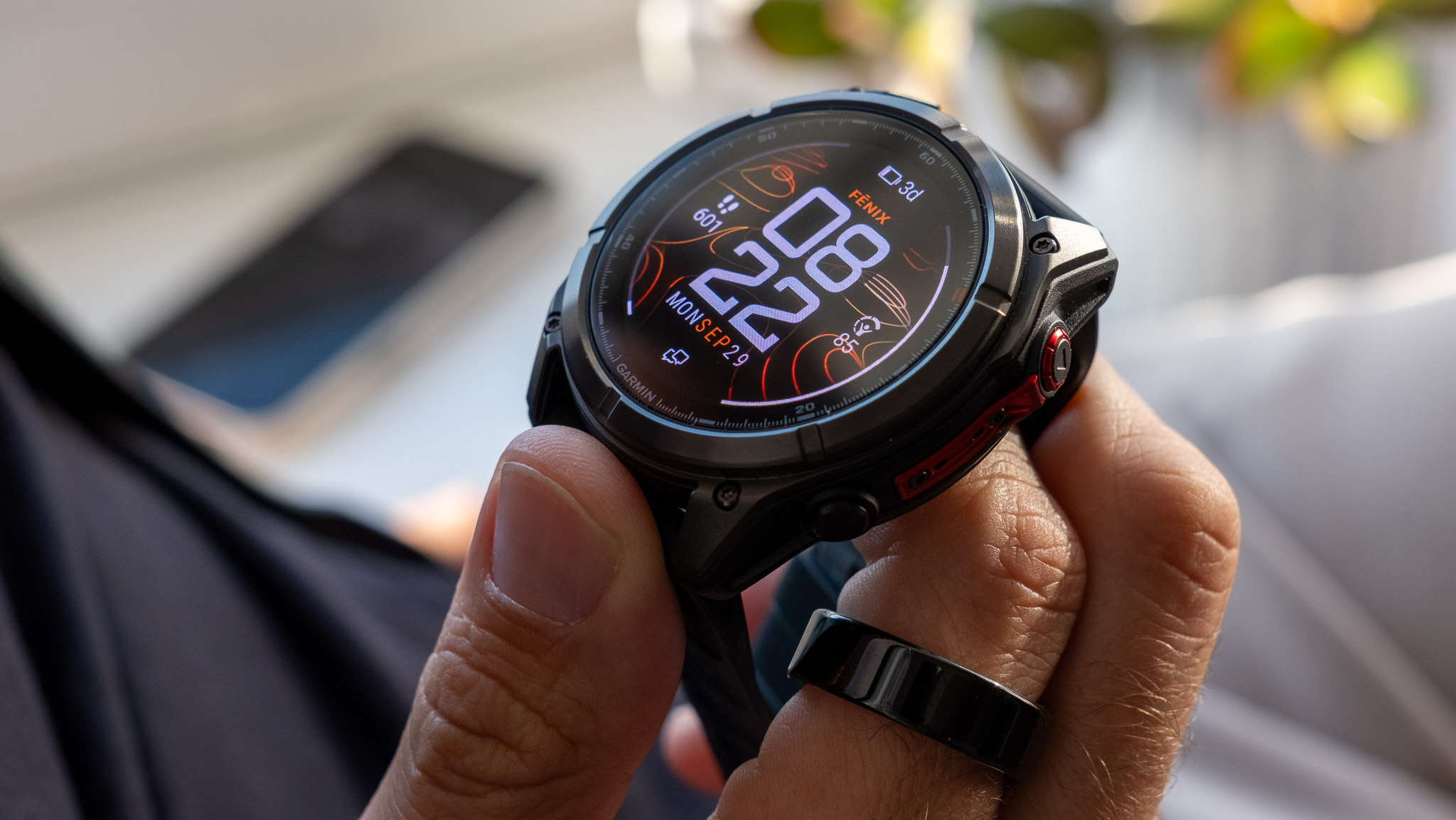Something big may be brewing inside Garmin and it could reshape its 2026 lineup
New patent hints at an AMOLED and solar fusion that once seemed impossible


Garmin might finally be preparing to solve a problem it has been circling for years.
A newly uncovered patent suggests the brand has found a way to merge AMOLED screens with solar charging, a combination Garmin has repeatedly said wasn’t feasible without adding cost or compromising performance.
If this technology is genuinely ready, it could open the door to something fans have wanted for a long time: Solar editions of the best Garmin watches, including future AMOLED Forerunners.
The brand’s current approach splits the world in two. You either get vibrant AMOLED panels, seen on the Garmin Fenix 8 and Forerunner 970, or you opt for ultra-efficient MIP screens with Power Glass for solar charging.
The two have never coexisted because solar layers block light and AMOLED panels produce their own illumination, leaving very little room for photovoltaic material to do its job.
Garmin even said adding solar to AMOLED wasn’t worth it because it wouldn’t deliver meaningful gains and would make already expensive watches pricier.
A new way to drink sunlight
That’s why this patent matters. It proposes layering microscopic pillars and hydrophobic channels around or above the display to let a liquid perovskite solar material flow through without obscuring the screen.
Get all the latest news, reviews, deals and buying guides on gorgeous tech, home and active products from the T3 experts
Perovskite is particularly efficient in low light and under cloudy conditions, which would be a major benefit for everyday wear instead of just power-user scenarios.
The concept would allow Garmin to keep the deep blacks and vibrant colours of AMOLED while quietly harvesting light in the background to extend battery life.
If this works in practice, it would deliver top-tier OLED clarity and days of extra battery life from ambient light across all the company's AMOLED watches.
And yes, it would finally make something like a Forerunner 970 Solar Edition possible, or a 570 Solar, depending on where Garmin wants to position the tech.
What this means for the Forerunner line
The timing is the biggest unknown. Garmin’s Forerunner 970 is still fresh, and retrofitting solar tech mid-cycle seems unlikely.
A Solar Edition of a future “Forerunner 980” feels far more plausible, especially as Garmin looks to push the line deeper into premium AMOLED territory.
And of course, there are hurdles to clear. Solar integration must remain invisible, preserve display brightness, and avoid inflating prices beyond what even dedicated athletes will tolerate.
But if Garmin has cracked it (or is close), the next generation of Forerunners, Fenix models and even Vivoactives could enter a new tier of self-sufficiency.
For now, as expected, nothing is confirmed. Still, this is the clearest sign yet that Garmin is preparing to give athletes what they truly want: bright screens that last longer outdoors and a step closer to a watch that thrives on the sun.

Matt Kollat is a journalist and content creator who works for T3.com and its magazine counterpart as an Active Editor. His areas of expertise include wearables, drones, fitness equipment, nutrition and outdoor gear. He joined T3 in 2019. His byline appears in several publications, including Techradar and Fit&Well, and more. Matt also collaborated with other content creators (e.g. Garage Gym Reviews) and judged many awards, such as the European Specialist Sports Nutrition Alliance's ESSNawards. When he isn't working out, running or cycling, you'll find him roaming the countryside and trying out new podcasting and content creation equipment.
You must confirm your public display name before commenting
Please logout and then login again, you will then be prompted to enter your display name.